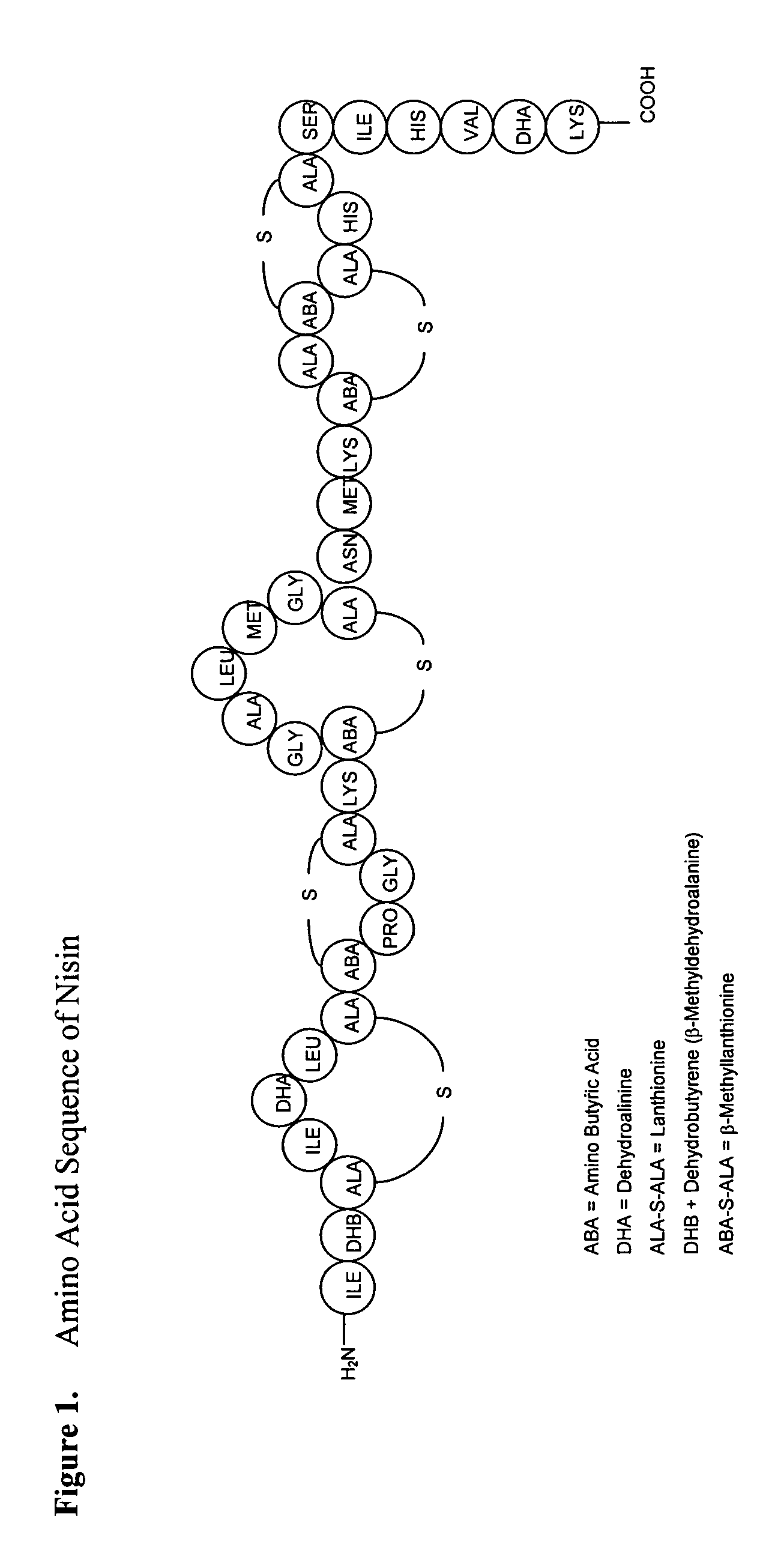Egg Products
- Summary
- Abstract
- Description
- Claims
- Application Information
AI Technical Summary
Benefits of technology
Problems solved by technology
Method used
Image
Examples
example 1
Liquid Egg Mixture #1
[0056]
INGREDIENTSPERCENT (w / w)Whole Eggs99.40–99.80Sodium Acid Pyrophosphate (SAPP)0.10–0.30Citric Acid0.08Monosodium Phosphate (MSP)0.10–0.15Nisin0.005TOTAL100pH: 6.7 to 6.8Solids: 24 ± 1%
[0057]The ingredients were combined with the whole egg to create a mixture. The pH was taken and additional citric acid was added if necessary to adjust the pH to about 6.7 to 6.8. The whole liquid egg mixture was then heated at about 65° C. (˜150° F.) for about 2.5 minutes to pasteurize the mixture. The mixture was then subjected to high pressure processing.
example 2
Liquid Egg Mixture #2
[0058]
INGREDIENTSPERCENT (w / w)Whole Eggs60–80Egg Whites 5–15Water15–25Salt0.1–1.0Xanthan Gum0.1–0.5Citric Acid0.06SAPP0.05–0.10Butter Flavor0.1MSP0.01–0.05Nisin0.005TOTAL100
[0059]The ingredients were combined and agitated. Additional citric acid was added to adjust the pH to about 6.7±0.1 if necessary. The liquid egg mixture was then heated at about 65° C. (˜150° F.) for about 2.5 minutes to pasteurize the mixture. The mixture was then subjected to high pressure processing.
example 3
Liquid Egg Mixture #3
[0060]
INGREDIENTSPERCENT (w / w)Whole Eggs60–80Egg Whites10–20Water 5–20Buttermilk0.5–2.0Salt0.1–0.5Xanthan Gum0.1–0.5Citric Acid0.1Nisin0.005TOTAL100pH 6.7 ± 0.1Solids: 19.5–21
[0061]The ingredients were combined and agitated. Additional citric acid was added to adjust the pH to about 6.7±0.1 if necessary. The liquid egg mixture was then heated at about 65° C. (˜150° F.) for about 2.5 minutes to pasteurize the mixture. The mixture was then subjected to high pressure processing.
PUM
 Login to View More
Login to View More Abstract
Description
Claims
Application Information
 Login to View More
Login to View More - R&D
- Intellectual Property
- Life Sciences
- Materials
- Tech Scout
- Unparalleled Data Quality
- Higher Quality Content
- 60% Fewer Hallucinations
Browse by: Latest US Patents, China's latest patents, Technical Efficacy Thesaurus, Application Domain, Technology Topic, Popular Technical Reports.
© 2025 PatSnap. All rights reserved.Legal|Privacy policy|Modern Slavery Act Transparency Statement|Sitemap|About US| Contact US: help@patsnap.com

